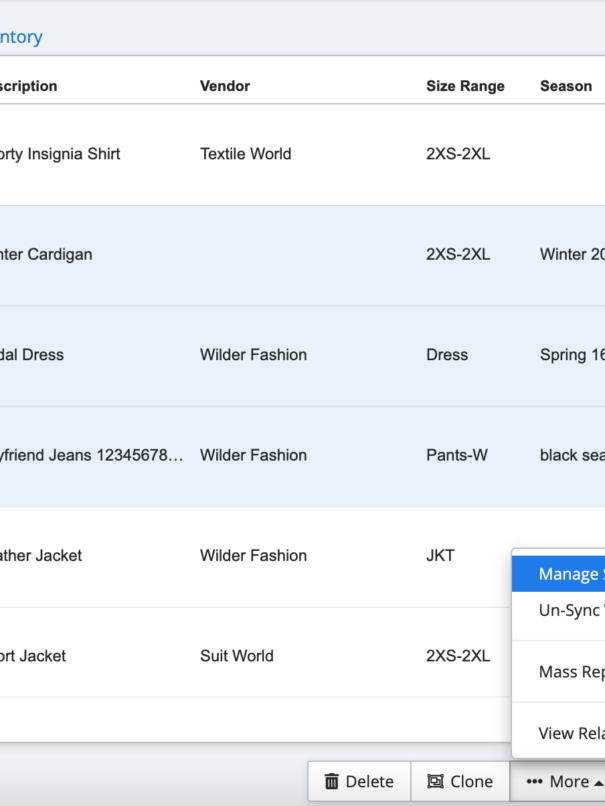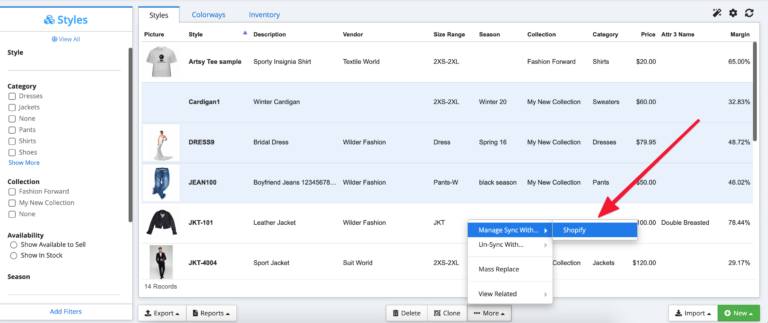The success of an ERP implementation hinges on the effective training of employees. Even the most advanced ERP systems may not deliver their intended benefits without adequate training. The purpose of this blog post is to highlight the importance of employee training in ERP implementation and provide a comprehensive guide to ensure a seamless adoption process.
Why You Need a Training Plan in Place
ERP training aims to facilitate seamless adoption, boost efficiency, and maximize ROI on enterprise resource planning investments. A well-trained workforce is more likely to embrace the new system, enhancing business operations and providing a competitive edge.
However, the path to successful ERP software training is not without its challenges.
Common challenges include:
- Resistance to change, particularly if employees are used to legacy systems
- The technical complexity of ERP systems can be overwhelming
- Maintaining productivity during training with a new ERP system
Addressing these challenges is essential for the success of the ERP implementations.
Preparing for ERP Training
Preparation involves assessing current skills, defining training goals, and selecting the appropriate training team and resources.
These steps lay the groundwork for a successful ERP implementation process.
Developing a Tailored Training Plan
After preparation, the next phase is to develop a tailored training plan addressing the specific needs of various roles within the organization.
Role-Based Training Modules
Role-based training modules allow each department to focus on the ERP tools and processes most relevant to their function, creating an efficient and engaging learning experience. For instance, finance teams can focus on budgeting, forecasting, and financial reporting modules, while inventory management teams concentrate on tracking stock levels, order processing, and logistics. Sales teams might benefit from modules on customer relationship management (CRM) and order fulfillment.
- Department-specific workshops: Custom workshops for each department help employees dive deeply into the ERP functions they’ll use regularly.
- Clear role objectives: Each role should have clear objectives for what they should achieve by the end of training, whether it’s processing transactions or generating reports. This ensures employees understand the relevance of the training to their day-to-day tasks and keeps them motivated.
Hands-On Practice and Simulations
Hands-on practice is essential to reinforcing learning and building confidence. ERP systems can seem overwhelming at first, but practice opportunities within a safe, simulated environment—often referred to as a sandbox—allow employees to experiment, make mistakes, and troubleshoot without affecting actual business data. This approach helps users learn by doing, accelerating the learning curve and reducing the chance of errors when the system goes live.
- Sandbox environment: A sandbox environment provides a risk-free space for employees to practice key tasks like data entry, report generation, and workflow processing. This familiarizes them with the ERP’s interface, functions, and intricacies.
- Guided scenarios and exercises: Structured exercises simulating real-life scenarios can help employees navigate complex processes. These exercises, such as order-to-cash or procure-to-pay processes, help employees learn how different modules interact and reinforce end-to-end understanding.
- Self-paced practice materials: Giving employees access to practice materials and exercises that they can work on at their own pace adds flexibility to the training, accommodating various learning speeds and styles.
Scheduled Refresher Courses
Training shouldn’t end after the initial rollout. To maintain proficiency and adapt to updates, it’s essential to schedule regular refresher courses. These sessions reinforce knowledge and skills, address any ongoing challenges, and introduce employees to new features or updates within the ERP system.
- Quarterly or semi-annual sessions: Regularly scheduled sessions ensure that employees don’t lose familiarity with the system and remain confident in their roles. This is particularly important for complex processes and for employees who may not use the ERP daily.
- New feature training: ERPs frequently release software updates with enhanced functionality. Refresher courses give employees a chance to learn these updates and understand how they impact their work.
- Skill assessments: Periodic assessments can help identify areas where employees may need additional support or training. This ensures the workforce remains competent and up-to-date with the system.
Continuous Support Channels
Continuous support is crucial for ERP adoption and user satisfaction. After initial training, employees may still face challenges as they encounter unique scenarios or system changes. Establishing multiple support channels, such as a dedicated help desk, an internal knowledge base, or ERP champions, can help employees troubleshoot and remain confident in using the ERP system.
- Internal help desk: A dedicated help desk staffed with ERP experts offers immediate assistance for common issues. This resource can resolve technical problems quickly, minimizing disruption to business operations.
- Documentation and knowledge base: Comprehensive documentation, including FAQs, step-by-step guides, and video tutorials, serves as a quick reference for employees needing a refresher or solution to a specific issue.
- ERP champions and peer support: Designating ERP champions within each department ensures that employees have an accessible, knowledgeable resource for troubleshooting. ERP champions can bridge the gap between IT and department users, facilitating smoother communication and fostering a culture of collaboration.
Flexible Learning Options
Different employees learn best in different ways, so it’s beneficial to offer a range of learning options to accommodate various preferences and schedules. A blended approach combining in-person training, online modules, and self-paced learning can cater to all learning styles and needs.
- Instructor-led and virtual training: Live instructor-led sessions, both in-person and virtual, provide structure and allow for real-time interaction, making it easy for employees to ask questions and get immediate feedback.
- On-demand training content: Recorded webinars, video tutorials, and online courses allow employees to learn at their own pace, making training accessible to employees with different schedules or learning speeds.
- Microlearning modules: Breaking down complex tasks into shorter, focused lessons or microlearning modules can increase retention and engagement. Employees can access these bite-sized lessons when they need a quick refresher or encounter a new situation.
Setting Clear Training Milestones and Metrics
To measure the effectiveness of the training plan, it’s important to set milestones and track employee progress through metrics. Monitoring metrics like user adoption rates, task completion times, and error rates can help identify training gaps and areas for improvement.
- User adoption rates: Track how quickly and efficiently employees are adopting ERP functionalities. A high adoption rate indicates that employees are comfortable with the system, while low adoption may signal the need for additional support.
- Performance metrics: Metrics such as task completion times, error rates, and data accuracy help gauge the impact of training on overall productivity and quality. For example, if order processing times decrease post-training, this indicates a positive training outcome.
- Employee feedback surveys: Regular feedback surveys help capture employee satisfaction with the training program and any ongoing pain points.
Implementing The Training Program
After developing the training plan, the next step is the effective implementation process. Implementation includes initiating a pilot program, employing a blended learning approach, offering hands-on practice, and collecting interactive feedback to continuously improve the training.
A pilot program enables organizations to test training effectiveness and refine content based on pilot group feedback. This helps in identifying any potential issues and making necessary adjustments before rolling out the training to the entire organization.
A blended learning approach, combining live, virtual, and on-demand training, caters to diverse learning styles and ensures all employees have access to necessary resources. This method offers flexibility, allowing employees to learn at their own pace and convenience.
Hands-on practice in a sandbox environment builds employee confidence and familiarity with the new system before live usage. Such practical experience is vital for ensuring employee comfort and proficiency with the new software.
Regular interactive feedback from employees during training helps adapt and improve content. This approach keeps the training program relevant and effective, addressing the organization’s evolving needs.
Reinforcing ERP Knowledge and Skills
Reinforcing initial training knowledge and skills is vital for long-term success. This includes providing post-training support, appointing internal ERP champions, and scheduling ongoing learning sessions.
Internal ERP champions offering peer support and troubleshooting can significantly enhance training program effectiveness. These champions bridge the IT team and other users, providing valuable insights and assistance.
Periodic refresher sessions keep employee skills updated and ensure new employees receive proper training. Continuous learning is vital for adapting to changes and maintaining ERP system proficiency.
Conclusion
Effective training is a critical component of a successful ERP implementation. By preparing adequately, developing a tailored training plan, implementing the training program effectively, and reinforcing the knowledge and skills gained, organizations can ensure a seamless transition to the new ERP system. Investing in robust training programs not only improves user adoption and data accuracy but also maximizes the ROI of the ERP investment.
As your business expands and evolves, continuous training and support will play a vital role in maintaining the efficiency and productivity of your ERP system.







